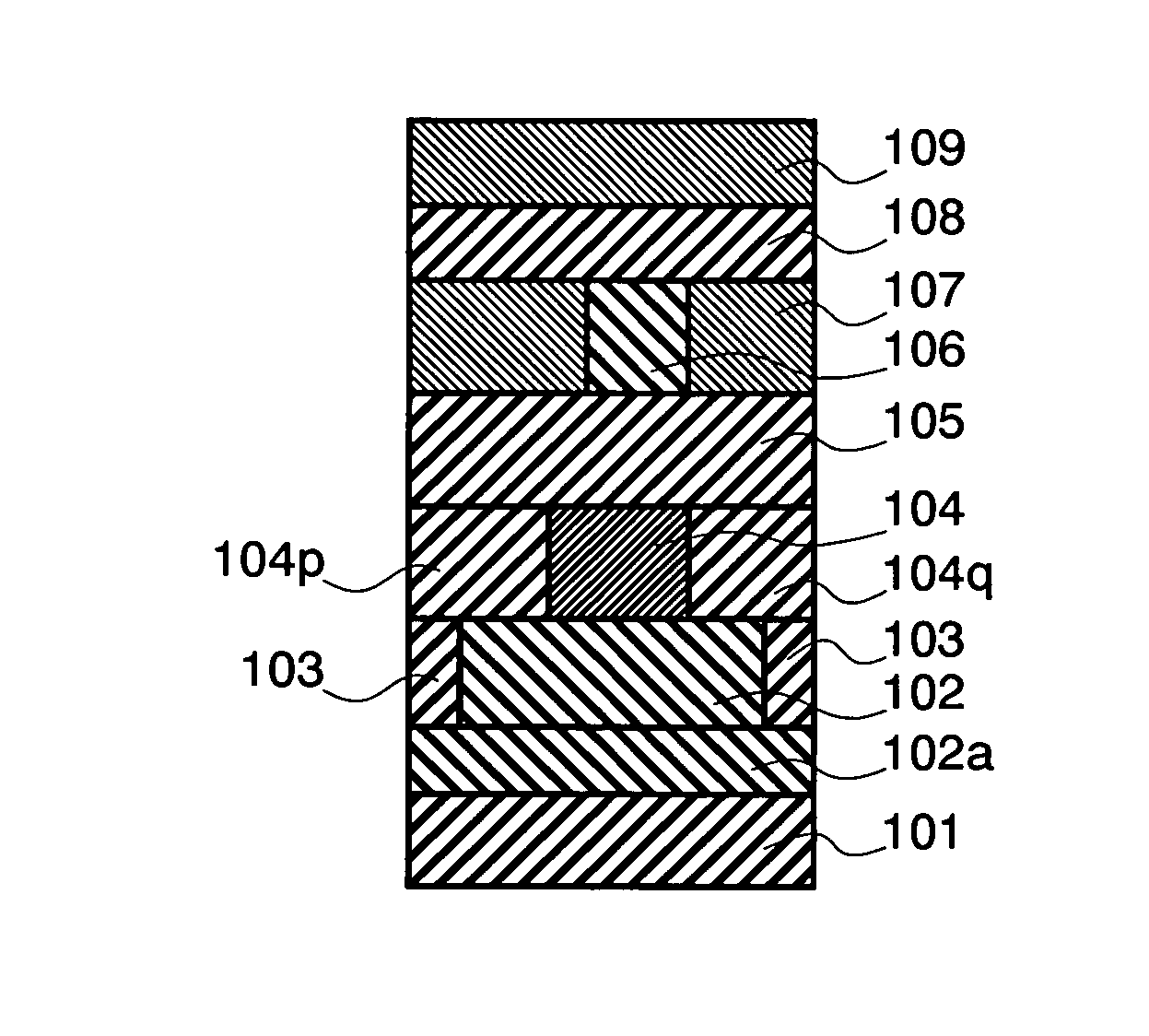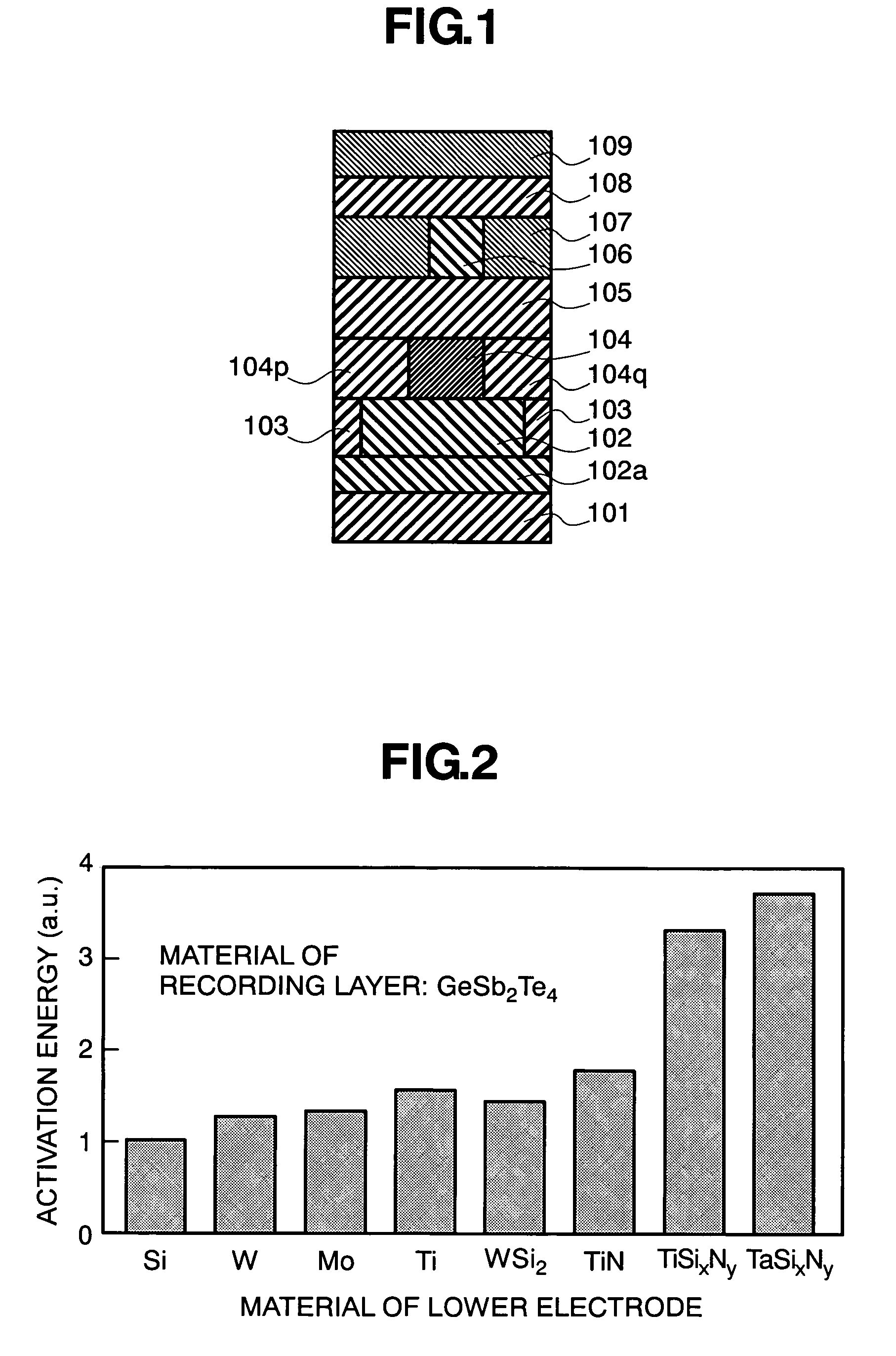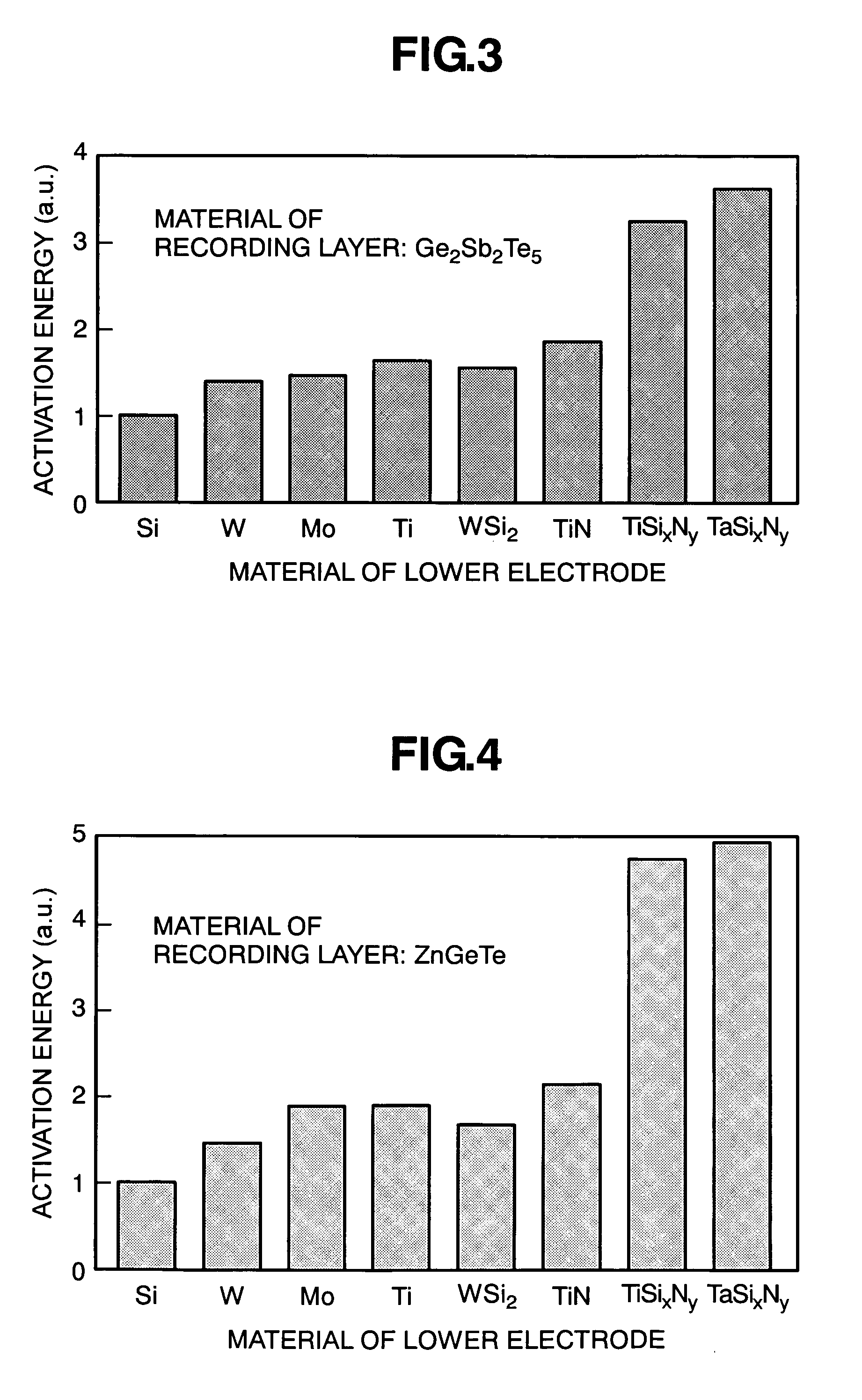Phase change memory featuring ferromagnetic layers in contact with phase change layer
a phase change memory and ferromagnetic layer technology, applied in the field of phase change memory, can solve the problems of difficult to distinguish the amorphous phase from the regular phase, and the regularity is deteriorated, and achieve the effects of high reliability, stable amorphous condition, and high tolerance against repeated rewriting
- Summary
- Abstract
- Description
- Claims
- Application Information
AI Technical Summary
Benefits of technology
Problems solved by technology
Method used
Image
Examples
embodiment 1
[0027]Next, the cross-sectional structure of a principle portion is shown in FIG. 1, first of all, in particular, within the phase change memory, according to the first embodiment of the present invention. Upon a silicon substrate 101 are built up layers, i.e., forming a wiring film or layer 102a, a lower electrode layer 102, an insulation layer 103, a phase-change recording layer 104, a ferromagnetic layer 104p, a ferromagnetic layer 104q, an upper electrode layer 105, a wiring layer 106, an insulating layer 107, a wiring layer 108, and an insulating layer 109, in that sequence thereof. Those are formed with applying the method, such as, the spattering, the chemical vapor deposition (CVD), or the plating, for example. The phase-change recording layer 104 includes at least two (2) elements therein, as the constituent ones thereof, which are selected from Ge, Sb and Te, and it is mainly composed from GeSb2Te4, Ge2Sb2Te5, Ge6Sb2Te9, or ZnSbxTey, ZnGexTey, ZnGeSbyTez, GeSbxTey, for exa...
embodiment 2
[0038]Next, in FIG. 10 is shown the cross-sectional structure of a principle portion within the phase change memory, according to a second embodiment of the present invention. The difference thereof from the first embodiment lies in that the lower electrode 102 is built up with two (2) layers 102b and 102c in the structure thereof, in the second embodiment. In this case, for a first lower electrode 102b, it is preferable to select a material having good adherence with the wiring layer 102a, and for a second lower electrode 102c, it is preferable to apply an amorphous material, having the atomic arrangement similar to that in the amorphous phase of the phase-change recording layer 104, in particular, for the purpose of stabilizing the amorphous phase of the recording layer 104. Such amorphous materials, having the atomic arrangement similar to that of the amorphous phase of the recording layer 104, as well as, being preferable to be the material of the second lower electrode 102c, ar...
embodiment 3
[0039]Next, in FIG. 11 is shown the cross-sectional structure of a principle portion within the phase change memory, according to a third embodiment of the present invention. The difference thereof from the first embodiment lies in that the insulation layer 103 is built up with two (2) layers 103a and 103b in the structure thereof, in the third embodiment. In this case, for a first insulation layer 103a, it is preferable to select a material having good adherence with the wiring layer 102a, and for a second insulation layer 103b, it is preferable to apply an amorphous material, having the atomic arrangement similar to that in the amorphous phase of the phase-change recording layer 104, in particular, for the purpose of stabilizing the amorphous phases of the lower electrode 102 and the recording layer 104. Such amorphous materials, having the atomic arrangement similar to that of the amorphous phase of the recording layer 104, as well as, being preferable to be the material of the s...
PUM
 Login to View More
Login to View More Abstract
Description
Claims
Application Information
 Login to View More
Login to View More - R&D
- Intellectual Property
- Life Sciences
- Materials
- Tech Scout
- Unparalleled Data Quality
- Higher Quality Content
- 60% Fewer Hallucinations
Browse by: Latest US Patents, China's latest patents, Technical Efficacy Thesaurus, Application Domain, Technology Topic, Popular Technical Reports.
© 2025 PatSnap. All rights reserved.Legal|Privacy policy|Modern Slavery Act Transparency Statement|Sitemap|About US| Contact US: help@patsnap.com



